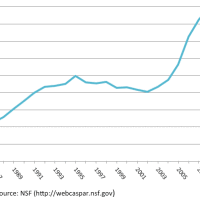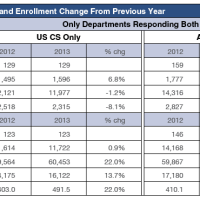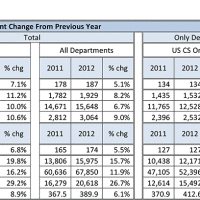Expanding the Pipeline: Gender and Ethnic Differences in PhD Specialty Areas
This article examines gender and residency/ethnicity differences in PhD specialty areas as reported to the CRA Taulbee Survey from 2012-2018. The Taulbee Survey is conducted each fall and, among other questions, asks doctoral departments of Computer Science, Computer Engineering, and Information for data about each PhD they awarded in the previous academic year. The data on each new PhD includes gender, residency/race/ethnicity, and PhD specialty area. A total of 12,968 PhDs were awarded by Taulbee respondents during the 7 year period from 2012-2018.










